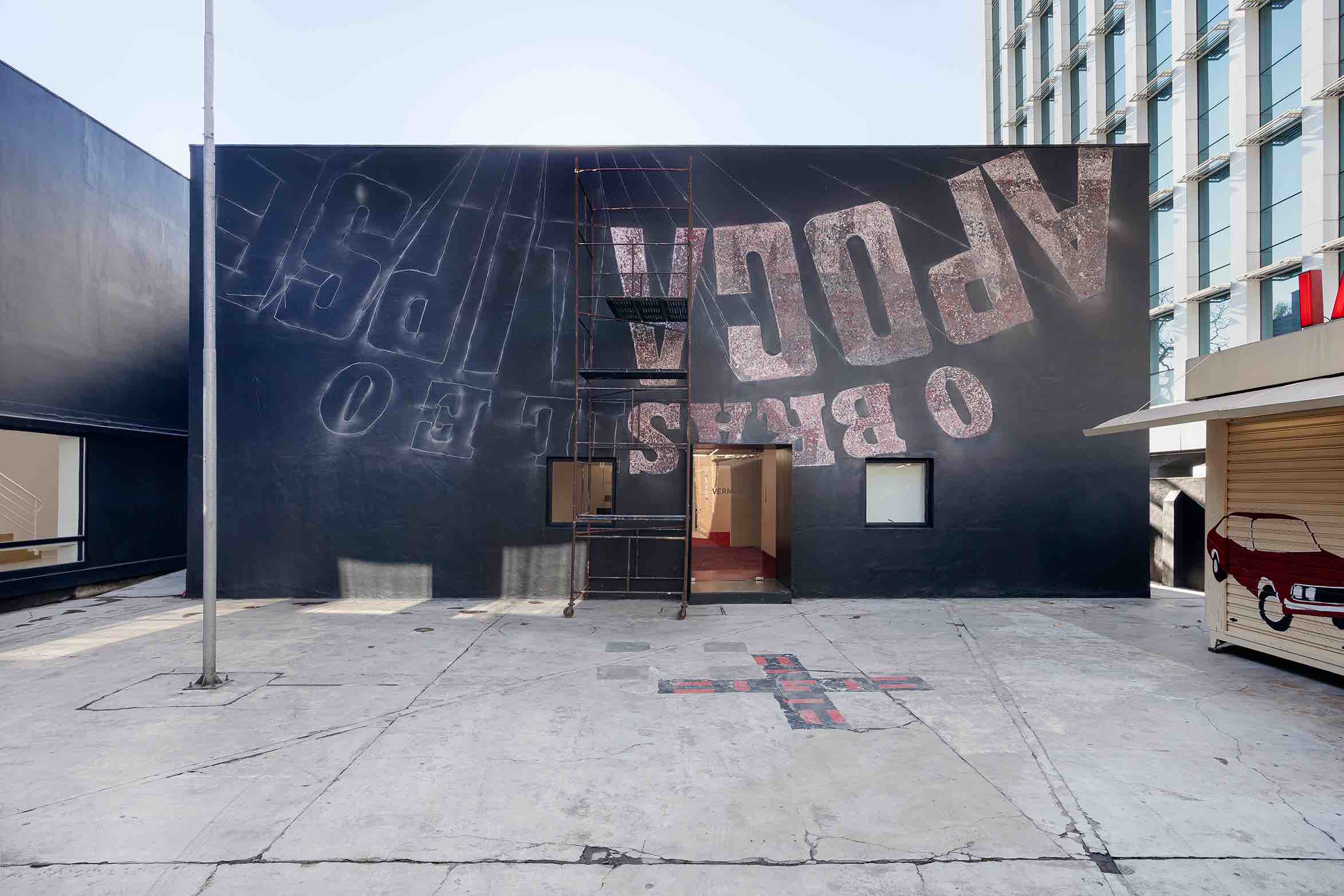


Inverted Apocalipse
sanded drawing on facade
2024
At the entrance of the exhibition, the mural shows an image found in a Christian evangelization book where it reads “Brazil and the Apocalypse.”
Applied upside down to the facade, the work deals with the imaginary of the end of the world as a tension between dystopia and utopia. As and incomplete process, the work can be completed at the end of the exhibition.
______
Apocalipse Invertido
desenho lixado na fachada
2024
Na entrada da exposição, o mural mostra uma imagem encontrada em um livro de evangelização cristã onde se lê “Brasil e o Apocalipse”.
Aplicada de cabeça para baixo na fachada, a obra lida com o imaginário do fim do mundo como uma tensão entre distopia e utopia. Como um processo incompleto, a obra pode ser concluída no final da exposição.
